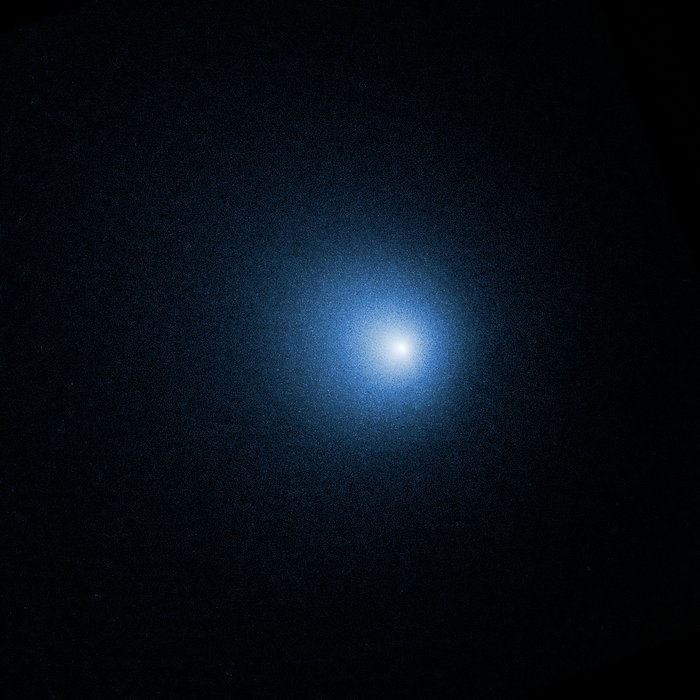Comet 46P/Wirtanen
The NASA/ESA Hubble Space Telescope observed comet 46P/Wirtanen on 13 December 2018 when the comet was 12 million kilometers from Earth. In the image, the comet’s nucleus is hidden in the center of a fuzzy glow from the comet’s coma. The coma is a cloud of gas and dust that the comet has ejected during its pass through the inner Solar System due to heating from the Sun.
The inner part of a comet’s coma is normally not accessible from Earth. The close fly-by of comet 46P/Wirtanen allowed astronomers to study it in detail. They combined the unique capabilities of Hubble, NASA’s Chandra X-ray Observatory, and the Neil Gehrels-Swift observatory to study how gases are released from the nucleus, what the comet’s ices are composed of, and how gas in the coma is chemically altered by sunlight and solar radiation.
Comet 46P/Wirtanen made its closest approach to Earth on 16 December, when it passed just over 11 million kilometers from our planet, about 30 times farther away than the Moon. Although it is the brightest comet of 2018, 46P/Wirtanen is only barely visible to the unaided eye. It is best viewed through binoculars or a telescope.
Comet 46P/Wirtanen orbits the Sun once every 5.4 years, much quicker than the 75-year orbit of the more famous Comet Halley. Most of its passes through the inner Solar System are much farther from Earth, making this display particularly notable.
Link:
Credit:NASA, ESA, and D. Bodewits (Auburn University) and J.-Y. Li (Planetary Science Institute)
About the Image
NASA caption
| Id: | opo1863a |
|---|---|
| Type: | Planetary |
| Release date: | 27 December 2018, 17:06 |
| Size: | 1092 x 1092 px |
About the Object
| Name: | 46P/Wirtanen |
|---|---|
| Type: | Solar System : Interplanetary Body : Comet |
| Category: | Solar System |
Wallpapers
Colours & filters
| Band | Wavelength | Telescope |
|---|---|---|
| Optical r | 689 nm |
Hubble Space Telescope
WFC3 |
